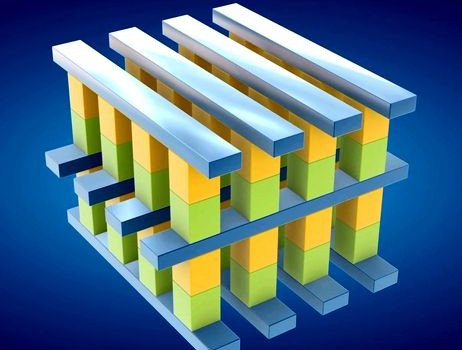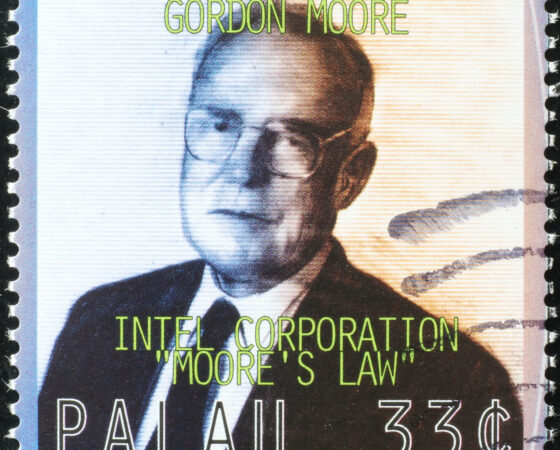At the end of July 2015, Intel Corp. and Micron Technology, Inc. announced a jointly-developed non-volatile memory they are calling 3D XPoint™. The claims they are making for the technology (pronounced “Crosspoint”) are quite sweeping. Although several commentators have suggested it’s probably a form of resistive RAM (ReRAM), Intel and Micron’s joint press release of 28th July 2015 says that 3D XPoint is “…the first new memory category in more than 25 years.” Micron’s website specifically states, “3D XPoint™ technology is an entirely new class of nonvolatile memory.” So much for ReRAM!

Intel and Micron have developed their own “unique material compounds” for 3D XPoint memory, although for now they are unspecified.
It’s stated to be 1000x faster than NAND Flash, has 1000x the endurance of NAND Flash (physically lasts a lot longer), and 10x the density of DRAM. However, it’s not necessarily faster than DRAM. But then again, it’s non-volatile so unlike DRAM retains data when powered off. It can apparently, therefore, be used for storage as well as system memory.
First production is slated for late 2015, and Intel expects to have first commercial product available in 2016, priced somewhere between DRAM and Flash.
The companies say they don’t expect 3D XPoint to replace DRAM and Flash. Rather, Intel points to extremely fast data analytics – for example, “real-time tracking of diseases” – as a typical application.
So this is a memory for the enterprise, the massive data center, and the “cloud”? Your ‘average Joe’ PC user won’t be benefitting from 3D XPoint? PC enthusiasts take heart: “The performance benefits of 3D XPoint technology could also enhance the PC experience, allowing consumers to enjoy faster interactive social media and collaboration as well as more immersive gaming experiences.” The hint seems to be that 3D XPoint could help to revive declining PC sales – especially for users who are into immersive 8K gaming.
Schematically, 3D XPoint looks rather like a girder architected building, in a “three-dimensional checkerboard” arrangement. This allows for the individual addressing of memory cells, which sit at the intersection of word lines and bit lines. Each cell has an accompanying selector, and Micron’s website explains that, “Memory cells are accessed and written or read by varying the amount of voltage sent to each selector.” The girder-like 3D crosspoint arrangement also allows layering, and the first chips on offer will be dual layered.
The whole thing is transistorless, and you’d be forgiven for thinking this must be ReRAM, resistive RAM, but remember our first paragraph! Intel says it’s the first new memory category in over 25 years! Micron: “an entirely new class of nonvolatile memory.” As they say on sports TV, “You make the call!”
The first 3D XPoint on offer will have a density of 128 Gbits. But Intel and Micron point to the “stackable” nature of the 3D XPoint structure which enables scaling to higher densities. It’s the scalability, in addition to the non-volatility, that will enable mass data storage, bringing data closer to the processor for all the performance gains that implies.
If the claims turn out to be true, this will be what Intel likes to call an “inflection point”, a technology game-changer. If 3D XPoint, on the other hand, doesn’t live up to the press-release hype, Intel and Micron could be looking rather red-faced sometime in 2016.
Links:
Intel/Micron joint Business Wire press release of 28 July, 2015:
http://www.businesswire.com/news/home/20150728005534/en/#.VcBXlvl8tB9
Announcement on Micron’s website:
http://www.micron.com/about/innovations/3d-xpoint-technology
Image courtesy of Intel:






